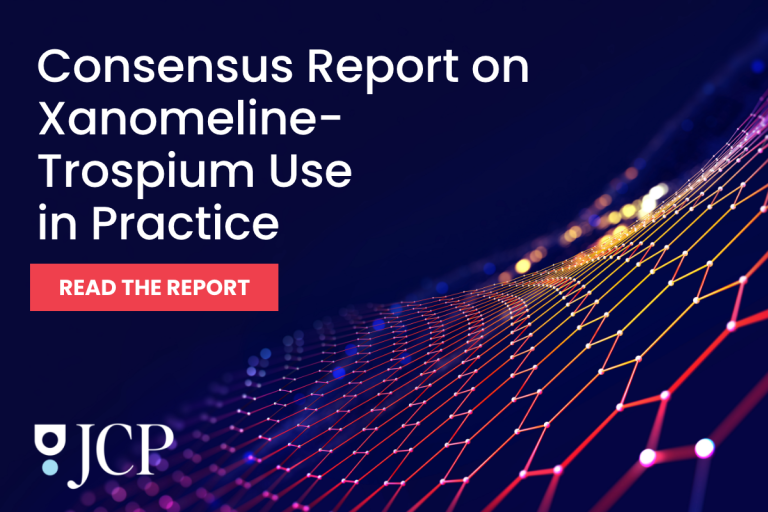The one great duty we owe to history is to rewrite it.
—Oscar Wilde
This invited commentary has been prepared by members of the International MAOI Expert Group (www.imaoi.org). The historical use of classic monoamine oxidase inhibitors (MAOIs) is overviewed, with consideration given to their efficacy and safety before we underscore the importance of reassessing their place in current treatment algorithms.
Were they to be discovered today, MAOIs would probably be described as a major advance in psychiatric treatment—yet they are rarely used in current practice. Their regrettable marginalization is a testament to the enduring influence of their complicated early history and misconceptions of safety and the marketing of newer agents positioned as of equivalent or even superior effectiveness.
Introduced in the 1950s as the first pharmacologic treatments for depression, initial clinical reports of MAOIs documented impressive remission rates in severely depressed patients, including nonresponders to electroconvulsive therapy (ECT).1 When MAOIs first became commercially available, clinical observations reinforced the findings that the nonselective and irreversible MAOIs that are still in use—tranylcypromine, phenelzine, isocarboxazid (and more recently transdermal selegiline)—were highly effective agents for depressive disorders, especially for the melancholic and atypical variants,2 and for some anxiety disorders.3
Nonetheless, by the end of the 1970s, prescription rates for the MAOIs began to fall as a reflection of two factors. First, ongoing fears concerning the “cheese reaction” (tyramine-induced hypertension) and interactions with other drugs4 (addressed below). Second, influential but methodologically flawed trials that employed insufficient doses (eg,5,6), thus eroding physician confidence in MAOI efficacy. When tricyclic antidepressants and, later, the selective serotonin-reuptake inhibitors entered the market, they were heavily marketed as safer than MAOIs, easier to use and equally effective, while MAOIs were increasingly characterized as “dangerous” and outdated and thus became widely regarded as treatments of last resort—if prescribed at all.
The intervening decades have clarified the pharmacology underlying interaction risks with MAOIs. Serotonin toxicity, misleadingly labeled as “serotonin syndrome,” is now understood to be a predictable and dose-dependent toxidrome.7 It occurs only when an MAOI is combined with a potent serotonin reuptake inhibitor or serotonin releaser.8 When adequate drug washout intervals (5 half-lives of the relevant agent)9 are respected, and contraindicated combinations are avoided, there is no risk of serotonin toxicity.
Similarly, tyramine-induced hypertension is no longer the unpredictable hazard it once seemed. Contemporary tyramine assays have shown that the implementation of modern food production and processing standards have greatly lowered tyramine levels compared to those measured in the 1960s. We also have better evidence to reliably guide dietary advice. As a result, the risk of adverse sequelae of transient hypertension is both less severe and less significant than previously believed.10
Consequently, current pharmacologic appraisal places MAOIs firmly within acceptable risk parameters for routine psychiatric practice,9 particularly in the context of the significant morbidity and mortality associated with inadequately treated and otherwise refractory depressive illnesses.
Despite these advances, worldwide use of MAOIs continues its precipitous decline, owing to several factors. Pharmaceutical companies focus on promoting the “new,” often more expensive drugs under patent rather than the “old” generic antidepressants, leading to the decreased manufacturing of MAOIs. In some countries, insurers or health care agencies add prior-authorization hurdles, or allow national formularies to omit MAOIs, leading physician training programs to provide little educational exposure to the competent use of MAOIs—all factors perpetuating a self-reinforcing cycle of loss of interest and use.
A significant consequence is that patients with severe, treatment-resistant depression may receive ECT or multiple rounds of comparatively ineffective newer drugs without ever being offered the option of an MAOI—a drug class with more than 60 years of proven efficacy.
Regrettably, recent advances in MAOI research have not yet permeated psychiatric teaching and practice adequately, so that their side effects remain misunderstood or overstated. For example, orthostatic hypotension is dose-related, common, and transient; insomnia can be managed with gradual dose escalation and add-on pharmacotherapy and may abate over time; weight gain is a notable issue with hydrazine MAOIs but typically absent with tranylcypromine (or transdermal selegiline).9 Expert consensus confirms that, under contemporary dietary guidance, serious hypertensive events are now so rare as to be virtually absent.10 For the sake of our patients, it is imperative that modern knowledge prevails over historical misinformation and outdated beliefs. Updated interaction monitoring software that correctly flags (un)safe combinations would be a useful aid in this endeavor.
Fortunately, the unique efficacy of MAOIs is regularly reinforced in specialist affective disorder services, where patients with long illnesses and multiple failed treatment attempts commonly improve in a few weeks on an MAOI. We need to disseminate these messages of hope and facilitate their greater translation into routine care.
However, because MAOIs entered the pharmacopeia prior to the current randomized controlled trial (RCT)–focused paradigm to evaluate drug efficacy, another notable barrier to their use at present is an overreliance on evidence hierarchies that assign uniquely superior status to RCTs. Because organizing new drug trials is commercially implausible for off-patent drugs like MAOIs, this has created a frozen and distorted evidence base, whereby absence of contemporary standard RCT-validated proof is misinterpreted as proof of inefficacy. We note, however, that MAOIs coexist with many agents discovered decades ago that have entered practice without an evidence base comparable to modern standards. Nevertheless, there is an overt need for contemporary MAOI studies to address this gap.
More broadly, the primacy of RCTs in evidence hierarchies has been the subject of criticism, including by Louis Lasagna, a leading clinical pharmacologist who played a pivotal role in advocating for RCT-based drug approval standards at the US Food and Drug Administration, but later cautioned against overreliance on them. Reflecting on his earlier work, he remarked, “In contrast to my role in the 1950s, which was trying to convince people to do controlled trials, now I find myself telling people that it’s not the only way to truth.”11
He echoed the concerns of Bradford Hill, who in his 1965 Heberden Lecture observed: “If one came to the conclusion that the only way to find out the truth about a medication was to use a controlled clinical trial, it would mean, not that the pendulum had swung too far, but that it had come completely off its hook.”12
Such perspectives reinforce the logic and need for a more inclusive and broad-based evidentiary framework, especially when assessing older treatments with extensive long-term real-world data underscoring their effectiveness. Ideally, a worldwide evidence database for MAOI efficacy in clinical practice should be established (including practice-based registries and observational effectiveness studies).
There are pitfalls in attempting to reconcile research findings from recent and preceding decades. Head-to-head comparisons and network meta-analyses13 tend to suffer from inconsistent diagnostic criteria among included cohorts and from lumping classic MAOIs with the less effective selective MAO-A inhibitors.14 A reappraisal of decades-long clinical experience from tertiary care settings and independent experts is essential to recognizing that newer pharmacotherapies have not made MAOIs obsolete. Moreover, recent retrospective studies have shown encouraging results mostly in refractory patients,15 which reinforces the lessons gleaned from extensive practical experience.
We suggest that rational treatment algorithms should therefore consider MAOI treatment as a viable option after failure of 2 antidepressants from differing classes, rather than relegating it to last-line status after invasive or experimental interventions. They should also be considered for treatment-resistant depressive conditions prior to introducing ECT, given their comparative side effect profiles.16 Moreover, MAOIs can be safely coadministered with ECT17 and may offer adjunctive clinical benefits.
We thus emphasize the need for renewed attention to the classic MAOIs in clinical practice and research.18 This brings us back to the opening quote by Oscar Wilde: “The one great duty we owe to history is to rewrite it.”
With prescription rates dwindling and consumer costs soaring, the coming years will prove pivotal in determining whether MAOIs will fade away entirely, forgotten by most or ill-remembered—it is unclear which is worse. The last generation of psychiatrists with extensive experience using these drugs has entered the twilight phase of their careers. Our International Expert Group receives increasingly frequent reports of patients who cannot find a doctor willing to prescribe an MAOI, even after many years of unresolved depressive symptoms and a multitude of failed treatment regimens. Other prospective patients have no access to an MAOI on their national drug market, and others still cannot (or can no longer) sustain the ever-mounting cost of treatment.
There is no great singular answer we can offer here to reverse the anti-MAOI trend, which will and has cost lives. Reclaiming the legacy of MAOIs demands that clinicians and policymakers reassess historical biases, so that clinical knowledge prevails over bias and inertia—notwithstanding that a new generation of MAOI trials conducted to contemporary standards would be a major contribution. These could involve standard RCT procedures assessing efficacy but should certainly involve real-world effectiveness studies, which have a greater capacity to identify both their effectiveness and clinical niches.
A future-oriented psychiatry must ensure that yesterday’s misconceptions do not dictate tomorrow’s prescriptions.
Article Information
Published Online: November 26, 2025. https://doi.org/10.4088/JCP.25com16111
© 2025 Physicians Postgraduate Press, Inc.
J Clin Psychiatry 2026;87(1):25com16111
Submitted: August 24, 2025; accepted October 9, 2025.
To Cite: Van den Eynde V, Andrade C, Berk M, et al. MAOI antidepressants: a history being rewritten. J Clin Psychiatry 2026;87(1):25com16111.
Author Affiliations: Department of Psychiatry, Radboud University Medical Centre, Radboud University, Nijmegen, the Netherlands (Van den Eynde, Ruhe); Department of Clinical Psychopharmacology and Neurotoxicology, National Institute of Mental Health and Neurosciences, Bangalore, India (Andrade); Institute for Mental and Physical Health and Clinical Translation (IMPACT), Deakin University, Geelong, Australia (Berk); Department of Psychiatry and Behavioral Sciences, Albert Einstein College of Medicine, Yeshiva University, New York, New York (Feinberg); Psychiatry and Psychopharmacology Private Practice, Boston, Massachusetts (Freeman); Department of Brain Sciences, Imperial College London, London, United Kingdom (Nutt); Discipline of Psychiatry & Mental Health, University of New South Wales, Sydney, Australia (Parker); Department of Psychiatry and Psychology, Mayo Clinic, Jacksonville, Florida (Richelson); Department of Psychiatry and Biobehavioral Sciences, University of California, Los Angeles, Los Angeles, California (Rubin); Department of Psychiatry and Neuroscience, University of California, Riverside, Riverside, California (Stahl); Department of Brain Sciences, Imperial College London, London, United Kingdom (Young); PsychoTropical Research, Bucasia, Australia (Gillman).
Corresponding Author: Vincent Van den Eynde, LLM, Reinier Postlaan 4, 6525 GC Nijmegen, The Netherlands ([email protected]).
Relevant Financial Relationships: Mr Van den Eynde is external research consultant for the International MAOI Expert Group and for Psychotropical Research. He has received speaker fees from the Flemish Psychiatric Association and from PsyFar. He holds stock options in Neurawell. Dr Andrade has been publishing an e-newsletter, supported by Sun Pharmaceuticals, since 2001; the payments are made directly to registered charities, and he does not benefit financially from the relationship. He accepts gifts from pharmaceutical organizations when these are part of a general program. These gifts are small in value and include textbooks or products such as delegate kits that are distributed to participants at academic meetings and conferences. His travel and local hospitality to deliver invited lectures and to conduct invited workshops at institutions or at conferences are supported by the organizers at the institutions or conferences. He has provided guidance to a medical team from Sun Pharmaceuticals to enable them to prepare and publish a review article to an open access journal; he was listed as an author and received no other compensation, monetary, or otherwise, for the guidance provided. He has received one-off speaker fees, travel support, chairman fees, and/or honoraria from Lupin Ltd, Hetero Healthcare, SMZ Cube, and Eisai India. He has also received payments for the preparation of educational materials from Renowa Edutech Private Limited. Dr Berk has received grant/research support from Stanley Medical Research Foundation, National Institutes of Health, MBF, NHMRC Senior Principal Research Fellowship 1059660, Cooperative Research Centre, Simons Autism Foundation, Cancer Council of Victoria, Rotary Health, Meat and Livestock Board, Woolworths, BeyondBlue, Geelong Medical Research Foundation, Aust Psychosis, Wellcome Trust, Medical Research Future Fund, Victorian Medical Research Acceleration Fund, Centre for Research Excellence, Victorian Government Department of Jobs, Precincts and Regions, Victorian COVID-19 Research Fund, Congressionally Directed Medical Research Programs USA, Australian Eating Disorders Research and Translation Centre, Patient-Centered Outcomes Research Institute, Baszucki Brain Research Fund, Danmarks Frie Forskningsfond, Psykiatrisk Center Kobenhavn, Stanley Medical Research Institute, Bristol Myers Squibb, Eli Lilly, GlaxoSmithKline, Organon, Novartis, Mayne Pharma, and Servier; has been a speaker for Lundbeck, Controversias Barcelona, Servier, Medisquire, HealthEd, ANZJP, EPA, Janssen, Medplan, RANZCP, Abbott India, ASCP, Headspace, Sandoz, Astra Zeneca, Bristol Myers Squibb, Eli Lilly, GlaxoSmithKline, Pfizer, Sanofi Synthelabo, Solvay, and Wyeth; and has been a consultant for Milken Institute, AstraZeneca, Bristol Myers Squibb, Eli Lilly, Bioadvantex, Merck, GlaxoSmithKline, Lundbeck, Janssen Cilag, Servier, International Society for Bipolar Disorders, Precision Psychiatry, Penn State College of Medicine, and Shanghai Mental Health Centre. He is a coinventor of two provisional patents regarding the use of NAC and related compounds for psychiatric indications, which, while assigned to the Mental Health Research Institute, could lead to personal remuneration upon a commercialization event. He is supported by a NHMRC Senior Principal Research Fellowship and Leadership 3 Investigator grant (1156072 and 2017131). He has received grant funding from Wellcome Trust, MRFF, Victorian Government Department of Jobs, Precincts and Regions, Cooper University, Janssen, Lundbeckfonden Copenhagen, St. Biopharma, Psychscene.com, WFSBP, NeuroSAS, CINP, Shanghai Mental Health Center, Penn State College of Medicine, Precision Psych Fondamental, International Society for Bipolar Disorders, Milken Baszucki Brain Research Fund, Stanley Medical Research Institute, Danmarks Frie Forskningsfond Psykiatrisk Center Kovenhavn, Patient-Centered Outcomes Research Institute, Australian Eating Disorders Research and Translation Centre, USA Department of Defense Office of the Congressionally Directed Medical Research Programs, and Equity Trustees Limited. He has lectured for Global Congress of Biological Psychiatry India, Otsuka CNS, RANZCP New Zealand, Eisai Australia, Sandoz, Allori, Lundbeck, World Congress of Psychiatry, African College of Neuropsychopharmacology, SVI Inaugural Health Matters Webinar Series, Argentine Association of Psychiatrists Congress of Psychiatry and Mental Health, and Global Bipolar Cohort (GBC). Dr Nutt has received consulting fees from Algernon, H. Lundbeck, and Beckley Psychtech; received advisory board fees from COMPASS Pathways; received lecture fees from Takeda, Otsuka, and Janssen; and owns stock in Alcarelle, Awakn, and Psyched Wellness. Dr Stahl has served as a consultant to Acadia, AbbVie/Allergan, Alkermes, Altus, Axsome, Bristol Myers Squibb, Clearview, Clexio, Compass Pathways, Delix, Done, Gate Neurosciences, Intra-Cellular Therapies, Janssen, Karuna Therapeutics, Longboard, LivaNova, Lundbeck, Neurocrine Biosciences, Neurawell, Otsuka, Relmada Therapeutics, Sage Therapeutics, Supernus, Tonix, Tris Pharma, Validus, and Vanda; holds options in Genomind, Lipidio, Neurawell and Delix; has served as a speaker for Abbvie/Allergan, Bristol Meyers Squibb, Intra-Cellular Therapies, and Lundbeck; has received research and/or grant support from Acadia, Allergan/AbbVie, Boehringer Ingelheim, Daiichi Sankyo-Brazil Eisai, Eli Lilly, Intra-Cellular Therapies, Ironshore, Neurocrine, Otsuka, Pear Therapeutics, Sage, Shire Sunovion, Supernus, and Torrent; holds options in Genomind, Lipidio, Neurawell, and Delix; has served as a speaker for AbbVie/Allergan, Bristol Myers Squibb, Intra-Cellular Therapies, and Lundbeck; and has received research and/or grant support from Acadia, Allergan/AbbVie, Boehringer Ingelheim, Daiichi Sankyo-Brazil Eisai, Eli Lilly, Intra-Cellular Therapies, Ironshore, Neurocrine, Otsuka, Pear Therapeutics, Sage, Shire Sunovion, Supernus, and Torrent. Dr Young reports paid lectures and advisory boards for the following companies with drugs used in affective and related disorders: Flow Neuroscience, Novartis, Roche, Janssen, Takeda, Noema pharma, Compass, AstraZeneca, Boehringer Ingelheim, Eli Lilly, LivaNova, Lundbeck, Sunovion, Servier, Allegan, Bionomics, Sumitomo Dainippon Pharma, Sage, Neurocentrx, and Otsuka. He was or is principal investigator in the Restore-Life VNS registry study funded by LivaNova; ESKETINTRD3004: “An Open-label, Long-term, Safety and Efficacy Study of Intranasal Esketamine in Treatment-resistant Depression”; “The Effects of Psilocybin on Cognitive Function in Healthy Participants”; “The Safety and Efficacy of Psilocybin in Participants with Treatment-Resistant Depression (P-TRD)”; “A Double-Blind, Randomized, Parallel-Group Study with Quetiapine Extended Release as Comparator to Evaluate the Efficacy and Safety of Seltorexant 20 mg as Adjunctive Therapy to Antidepressants in Adult and Elderly Patients with Major Depressive Disorder with Insomnia Symptoms Who Have Responded Inadequately to Antidepressant Therapy” (Janssen); “An Open-label, Long-term, Safety and Efficacy Study of Aticaprant as Adjunctive Therapy in Adult and Elderly Participants with Major Depressive Disorder (MDD)’’ (Janssen); “A Randomized, Double-blind, Multicentre, Parallel-group, Placebo-controlled Study to Evaluate the Efficacy, Safety, and Tolerability of Aticaprant 10 mg as Adjunctive Therapy in Adult Participants with Major Depressive Disorder (MDD) with Moderate-to-severe Anhedonia and Inadequate Response to Current Antidepressant Therapy’’; “A Study of Disease Characteristics and Real-life Standard of Care Effectiveness in Patients with Major Depressive Disorder (MDD) With Anhedonia and Inadequate Response to Current Antidepressant Therapy Including an SSRI or SNR.’’ (Janssen). He is or was UK Chief Investigator for Compass; COMP006 & COMP007 studies; Novartis MDD study MIJ821A12201. He reports the following grant funding (past and present): NIMH (USA), CIHR (Canada), NARSAD (USA), Stanley Medical Research Institute (USA), MRC (UK), Wellcome Trust (UK), Royal College of Physicians (Edin), BMA (UK), UBC-VGH Foundation (Canada), WEDC (Canada), CCS Depression Research Fund (Canada), MSFHR (Canada), NIHR (UK), Janssen (UK) EU Horizon 2020. He reports no shareholdings in pharmaceutical companies. Drs Feinberg, Freeman, Parker, Richelson, Rubin, and Gillman have nothing to disclose. Dr Ruhe declares no competing interests.
Funding/Support: None.
References (18)

- Robie TR. Iproniazid chemotherapy in melancholia. Am J Psychiatry. 1958;115(5):402–409. PubMed CrossRef
- Van den Eynde V, Parker G, Ruhe HG, et al. On the origins of MAOI misconceptions: reaffirming their role in melancholic depression. Psychopharmacol Bull. 2023;53(3):35–54. PubMed
- Blanco C, Raza MS, Schneier FR, et al. The evidence-based pharmacological treatment of social anxiety disorder. Int J Neuropsychopharmacol. 2003;6(4):427–442. PubMed CrossRef
- Asch DA, Parker RM. The Libby Zion case. One step forward or two steps backward?. N Engl J Med. 1988 Mar 24;318(12):771–775. PubMed CrossRef
- Clinical Trial of the Treatment of Depressive Illness: Report to the Medical Research Council by Its Clinical Psychiatry Committee. BMJ. 1965;1(5439):881–886. PubMed
- Rush AJ, Fava M, Wisniewski SR, et al. Sequenced Treatment Alternatives to Relieve Depression (STAR*D): rationale and design. Control Clin Trials. 2004;25(1):119–142. PubMed CrossRef
- Gillman PK. A review of serotonin toxicity data: implications for the mechanisms of antidepressant drug action. Biol Psychiatry. 2006;59(11):1046–1051. PubMed CrossRef
- Gillman PK, Van den Eynde V, Godet L, et al. Monoamine oxidase inhibitors and clinically relevant drug interactions: a guide for preventing serotonin toxicity and hypertensive reactions. Psychiatr Ann. 2023;53(8):353–358. CrossRef
- Van den Eynde V, Abdelmoemin WR, Abraham MM, et al. The prescriber’s guide to classic MAO inhibitors (phenelzine, tranylcypromine, isocarboxazid) for treatment-resistant depression. CNS Spectr. 2023;28(4):427–440. PubMed CrossRef
- Van den Eynde V, Gillman PK, Blackwell BB. The prescriber’s guide to the MAOI diet – thinking through tyramine troubles. Psychopharmacol Bull. 2022;52(2):73–116. PubMed CrossRef
- Lasagna LC. Interview transcript (Samizdat Health). Quoted in Samizdat Health PDF. https://samizdathealth.org/wp-content/uploads/2020/11/Lasagna.pdf
- Hill AB. Heberden Oration, 1965. Reflections on the Controlled Trial. Ann Rheum Dis. 1966;25(2):107. PubMed CrossRef
- Suchting R, Tirumalaraju V, Gareeb R, et al. Revisiting monoamine oxidase inhibitors for the treatment of depressive disorders: a systematic review and network meta-analysis. J Affect Disord. 2021;282:1153–1160. PubMed CrossRef
- Lotufo-Neto F, Trivedi M, Thase ME. Meta-analysis of the reversible inhibitors of monoamine oxidase type A moclobemide and brofaromine for the treatment of depression. Neuropsychopharmacol. 1999;20(3):226–247. PubMed CrossRef
- Kim T, Xu C, Amsterdam JD. Relative effectiveness of tricyclic antidepressant versus monoamine oxidase inhibitor monotherapy for treatment-resistant depression. J Affect Disord. 2019;250:199–203. PubMed CrossRef
- Feinberg SS. Successfully prescribing MAOIs for depression. Psychiatr Times. 2025;42(7):28–31.
- Kavakbasi E, Ciftci GM, Tonkul M, et al. Safety of concomitant tranylcypromine treatment during electroconvulsive therapy (ECT) series. Eur Psychiatr. 2022;65(S1):S261–S261. CrossRef
- Cattaneo CI, Fornaro M, Ressico FV, et al. Commentary letter on “Revitalizing monoamine oxidase inhibitors: a call for action”. CNS Spectrums. 2020;25(4):458–459. PubMed CrossRef
This PDF is free for all visitors!





